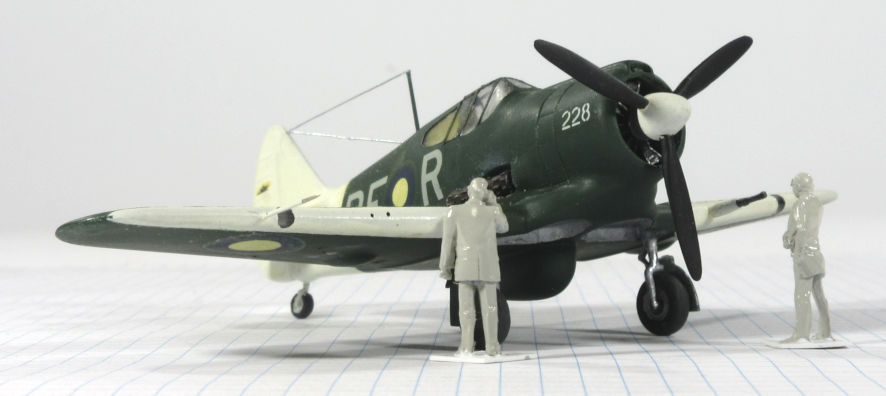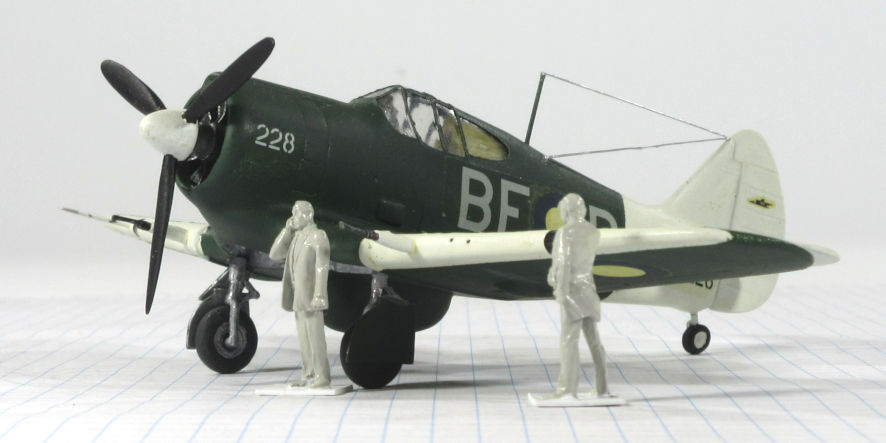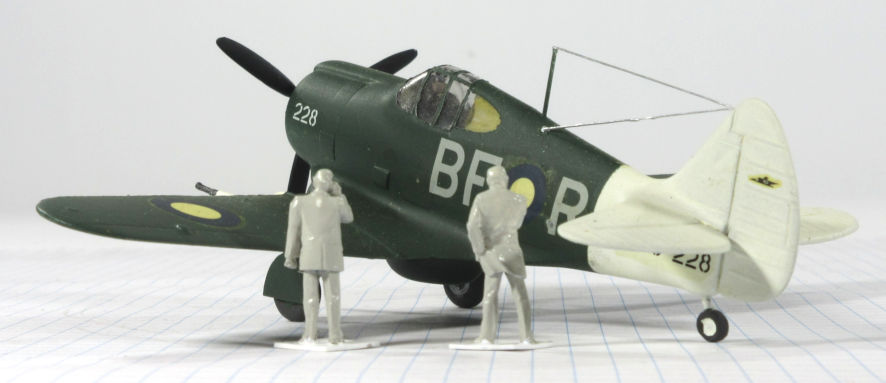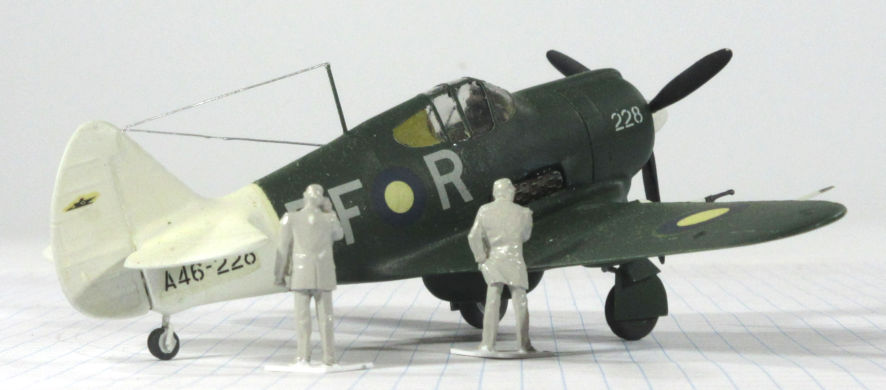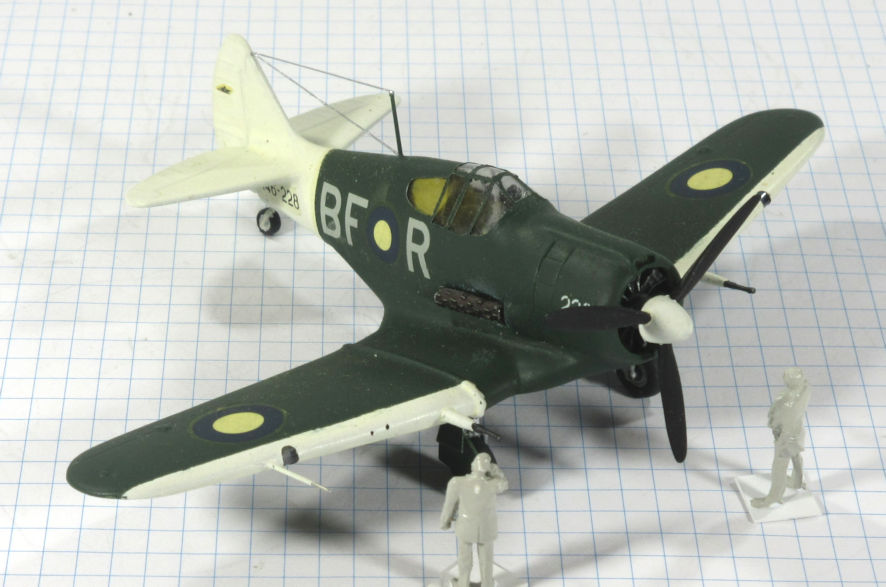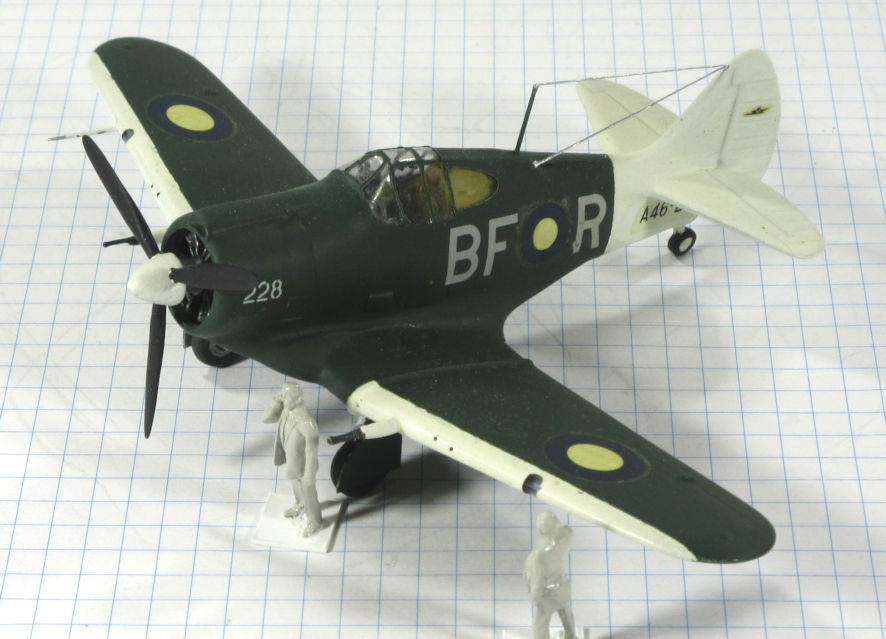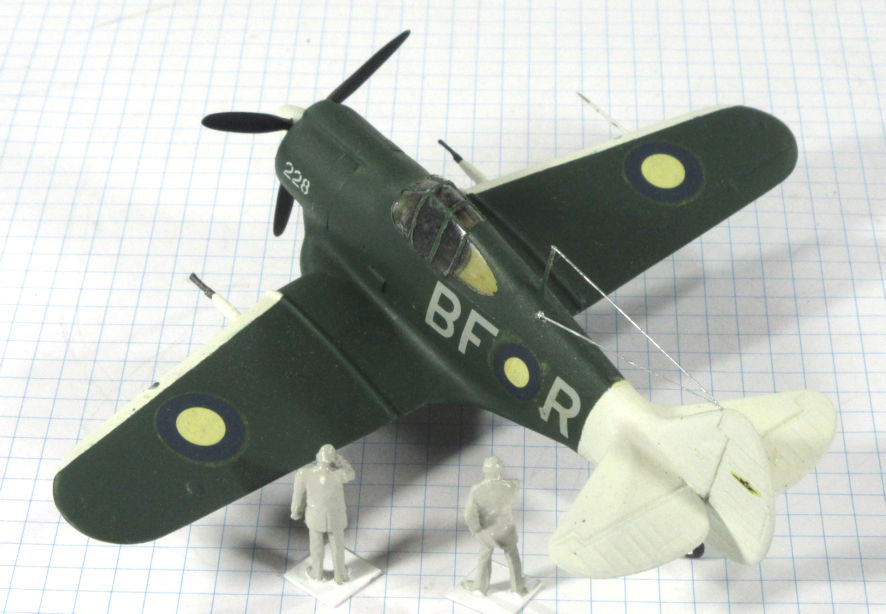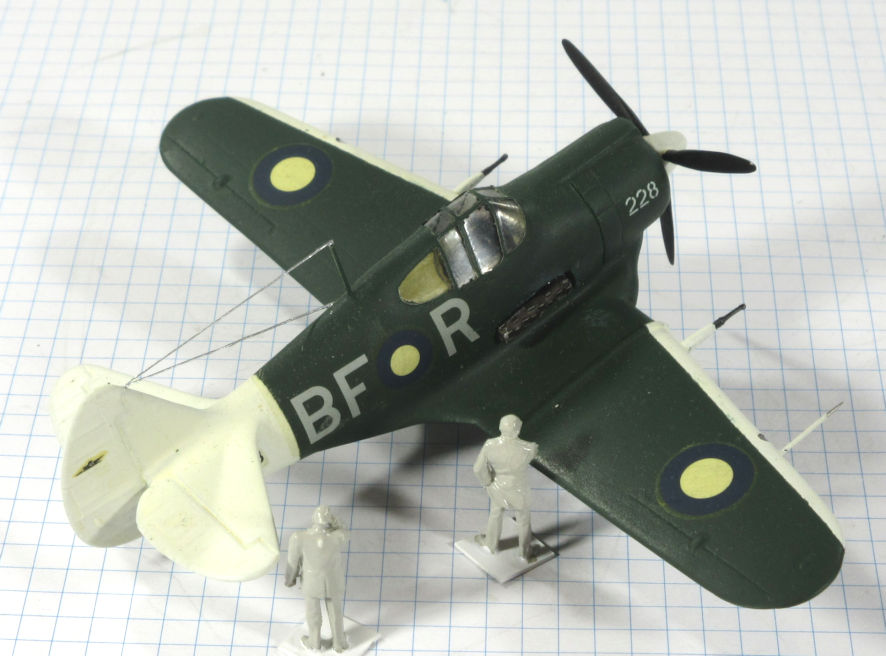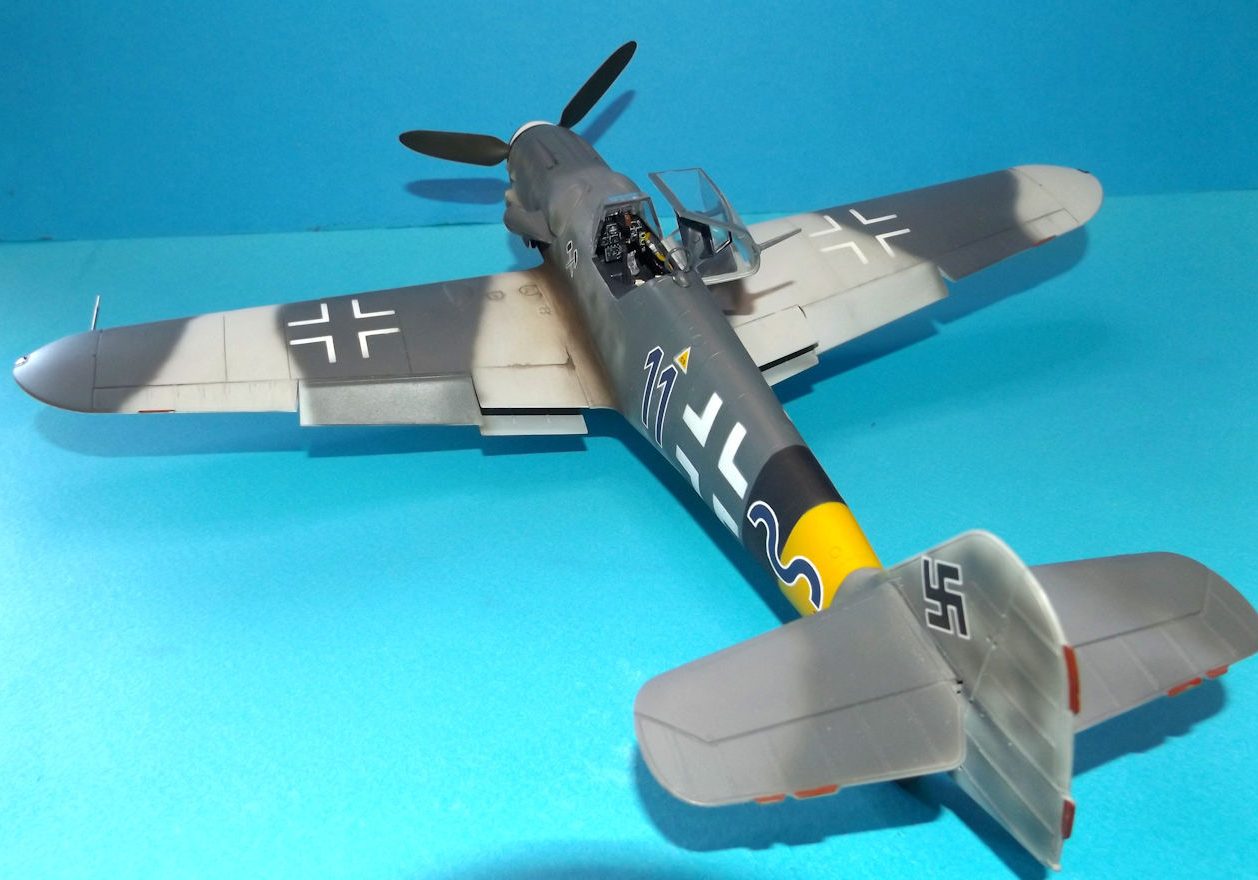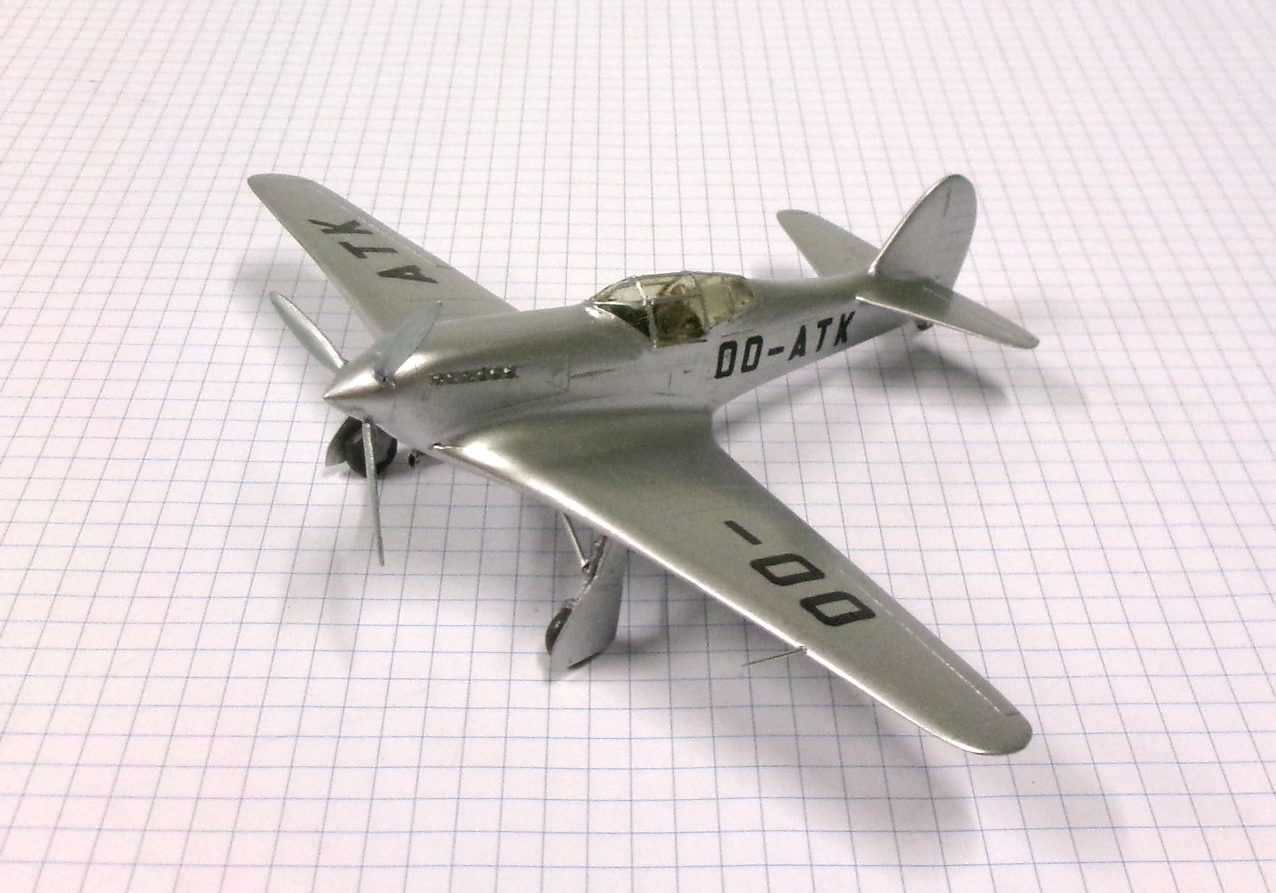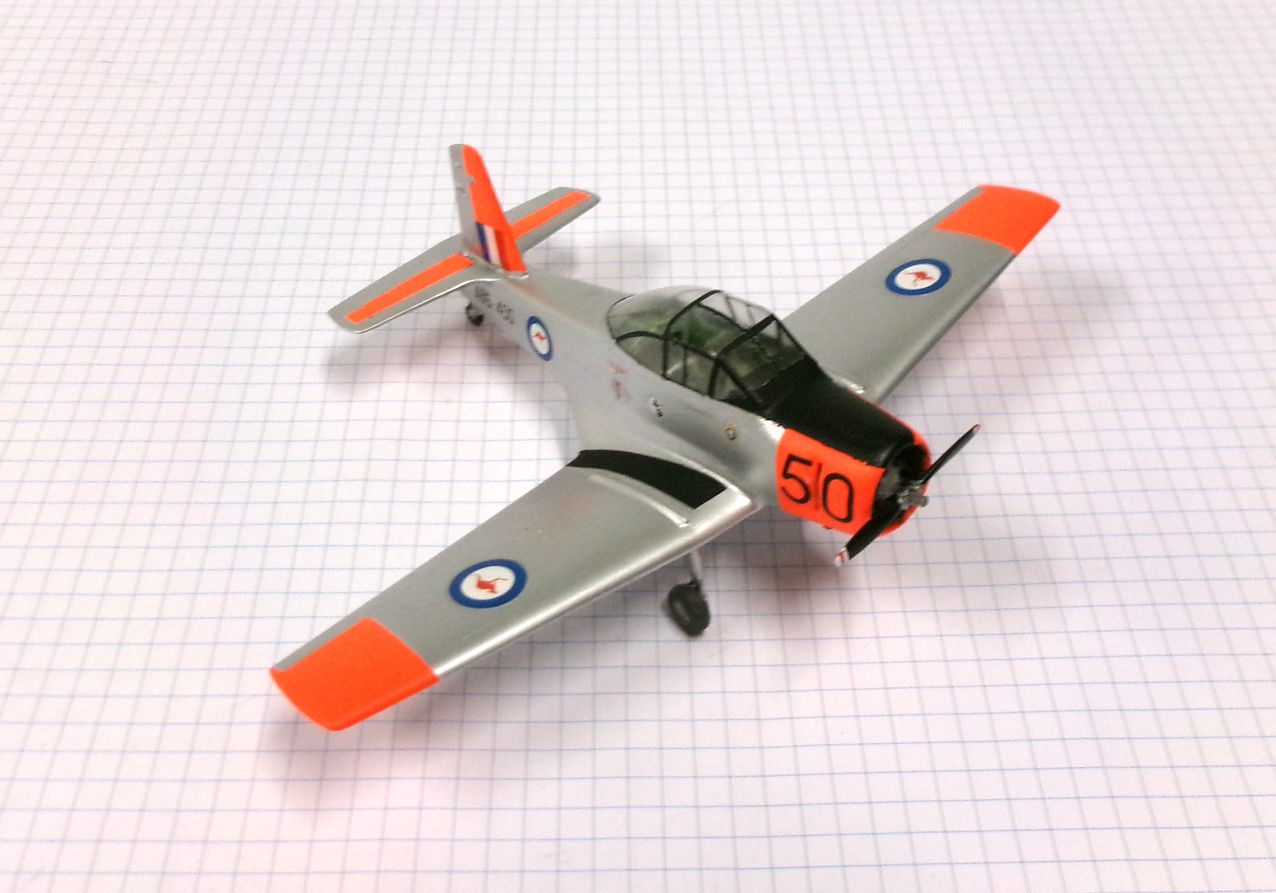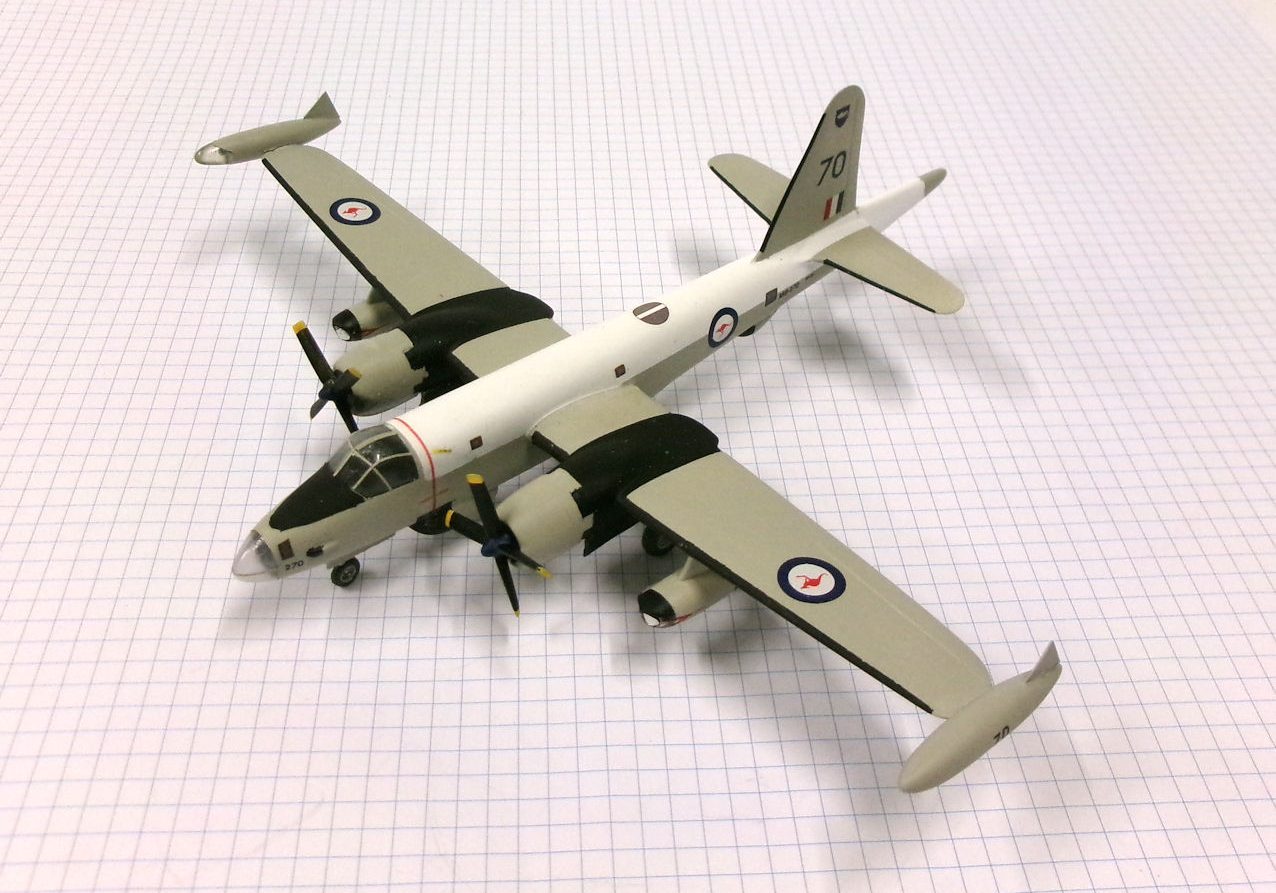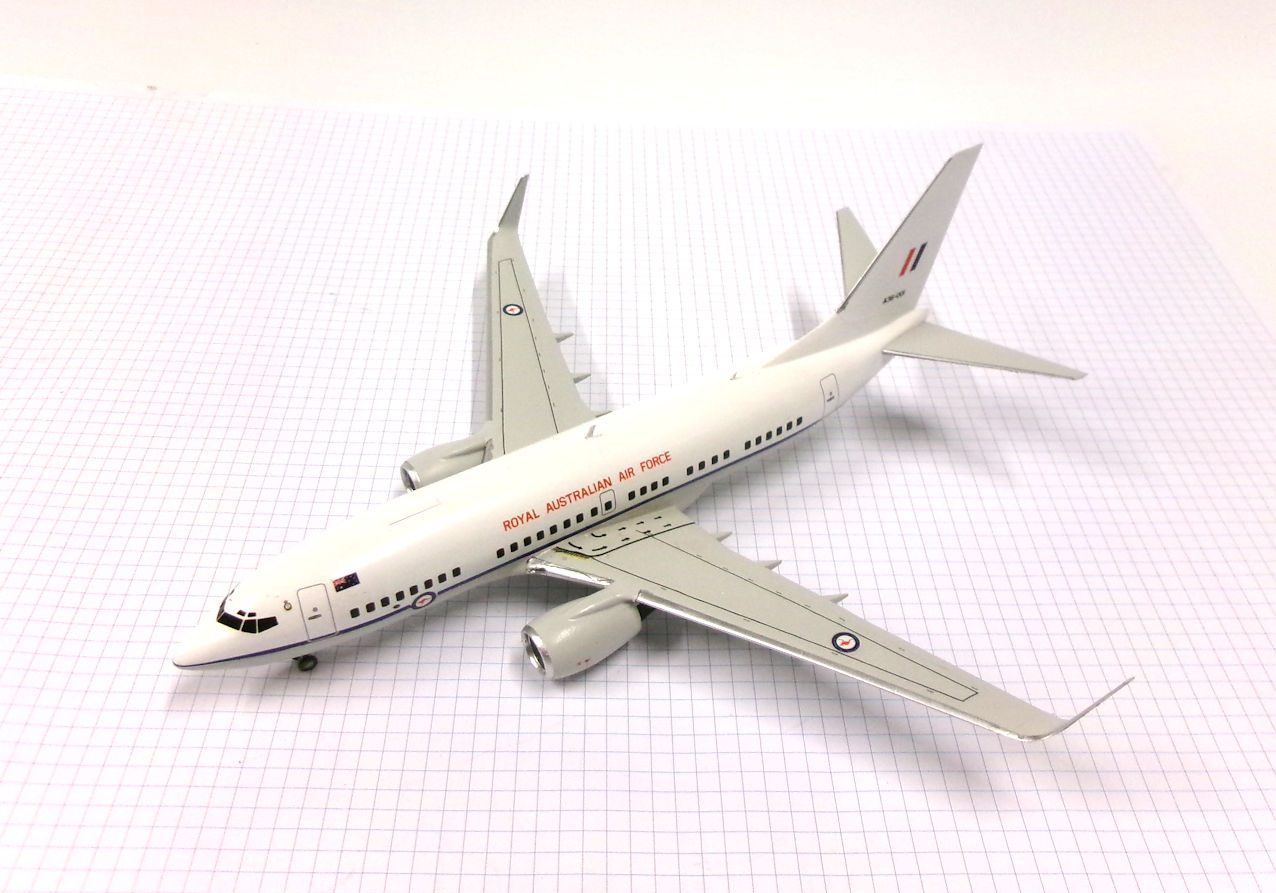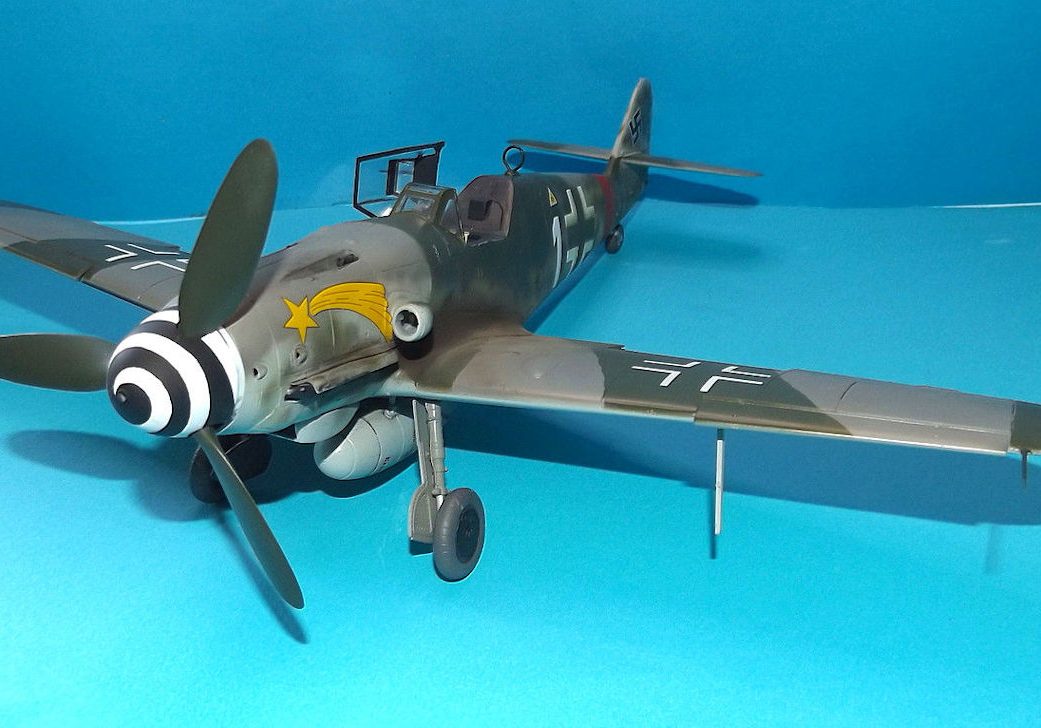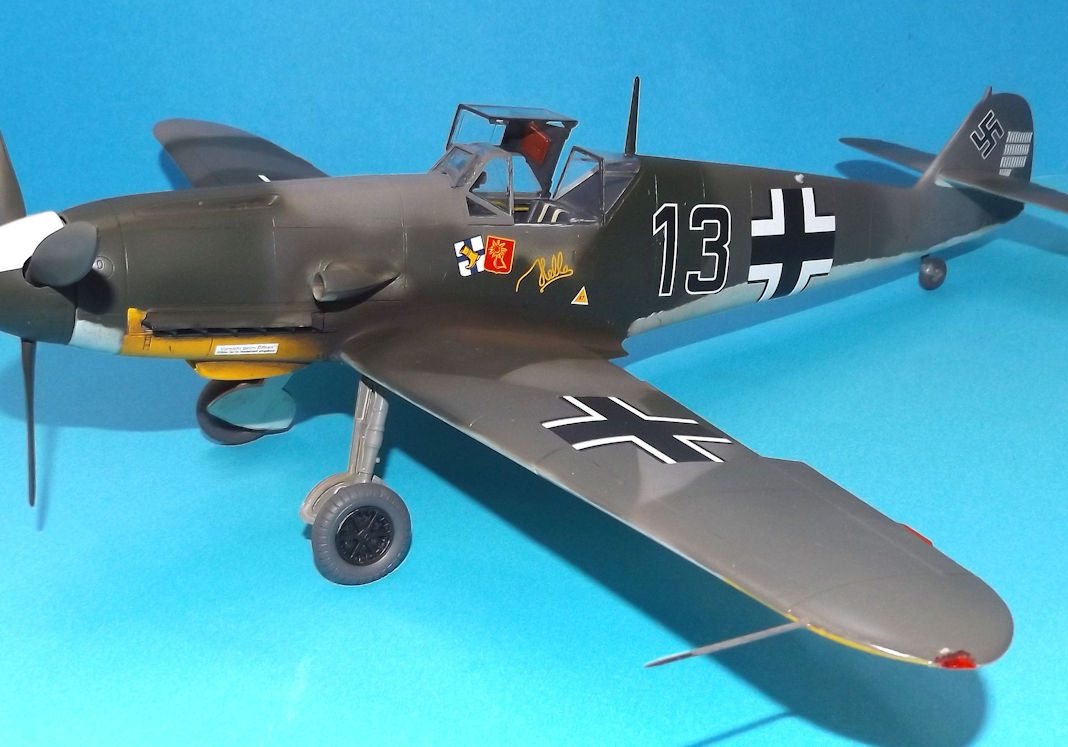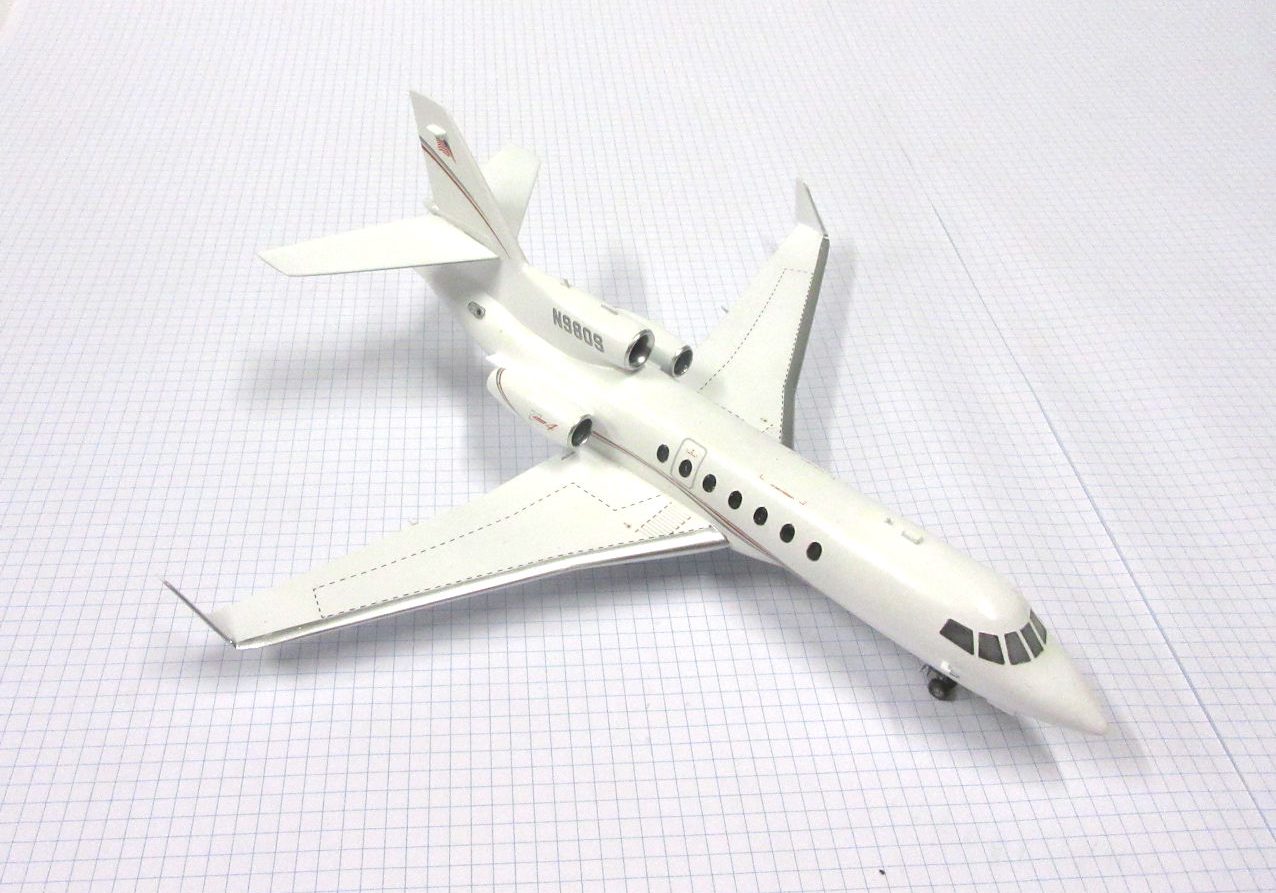History
The Boomerang was quickly designed in 1942 to give the Royal Australian Air Force a single seat fighter in response to Japan entering the war.
It’s high manoeuverability made it ideal for ground attach and army cooperation work.
Australia’s military planning had not foreseen the need for a single seat fighter so when Japan entered the war this shortage had to be made up quickly.
The Boomerang, designed to used parts from the Wirraway, first flew on 29 May 1942.
They began entering service in October 1942 and proved unsuitable as air superiority fighters.
However the jungle fighting in New Guinea needed a highly agile aeroplane that could help the army in the ground fighting and in this role the Boomerang was very successful and highly regarded.
This model represents A46-228 of No 5 Squadron RAAF, c.1945
Tasman 1/72 kit completed by Leigh Edmonds in September 1996.
